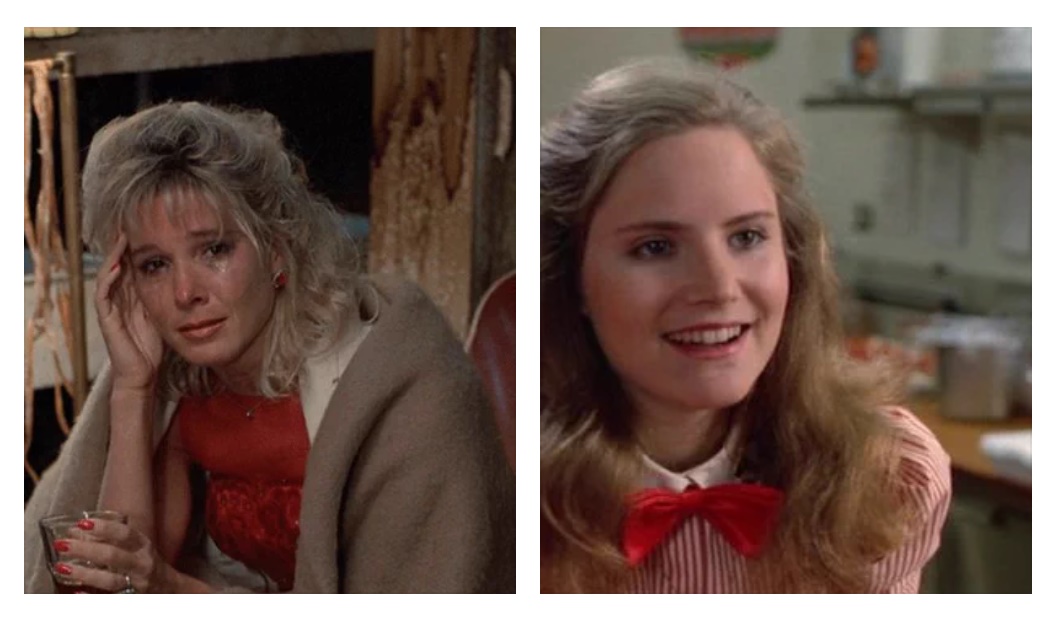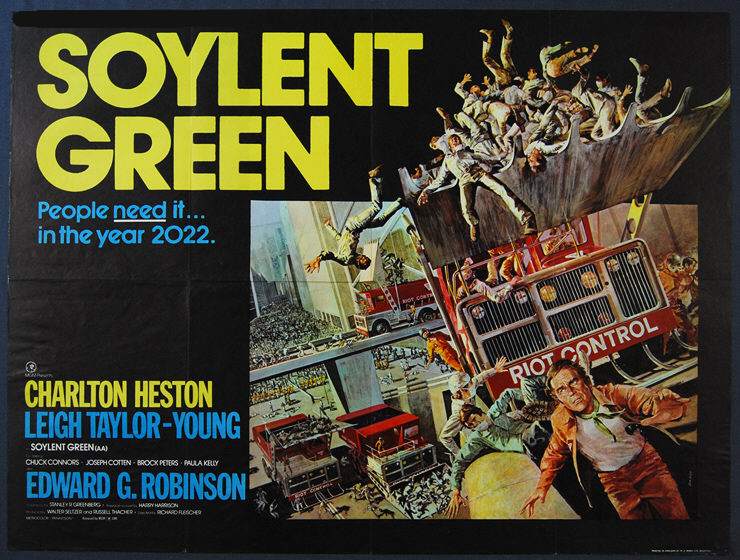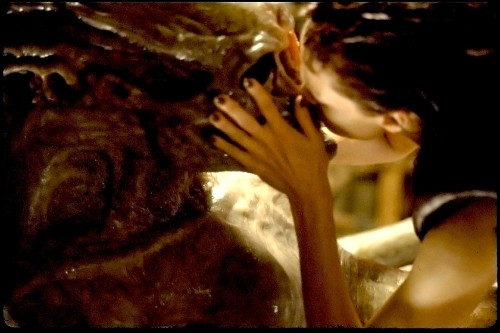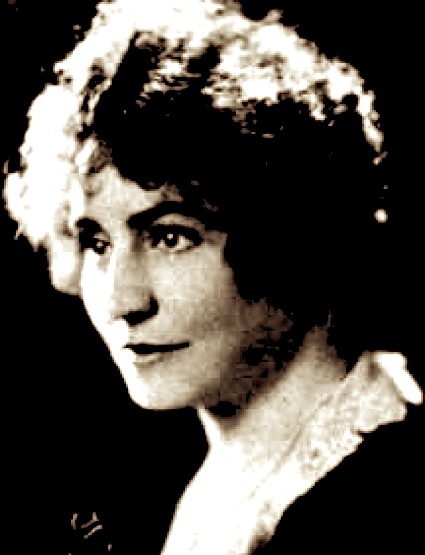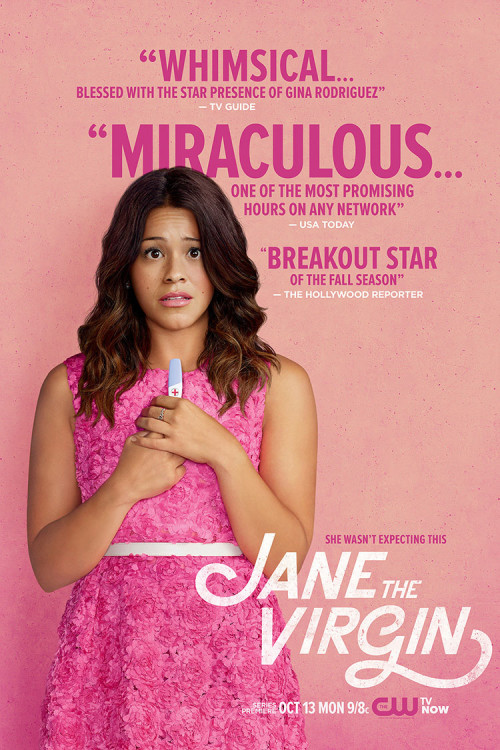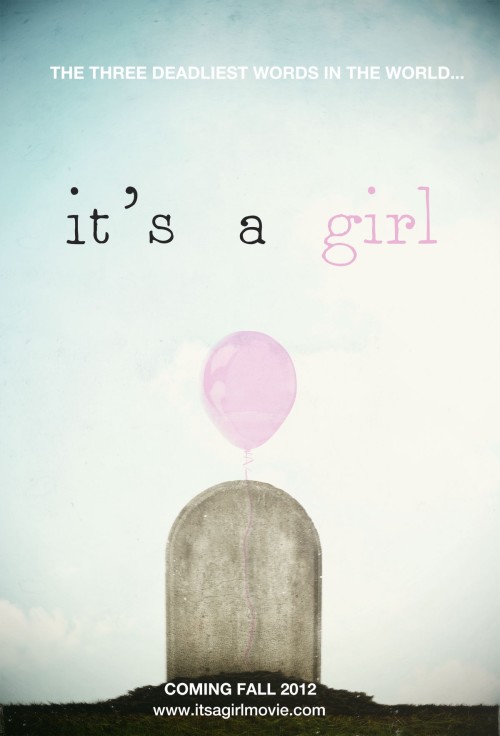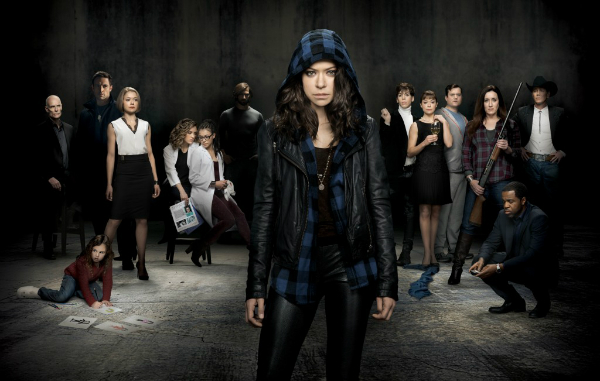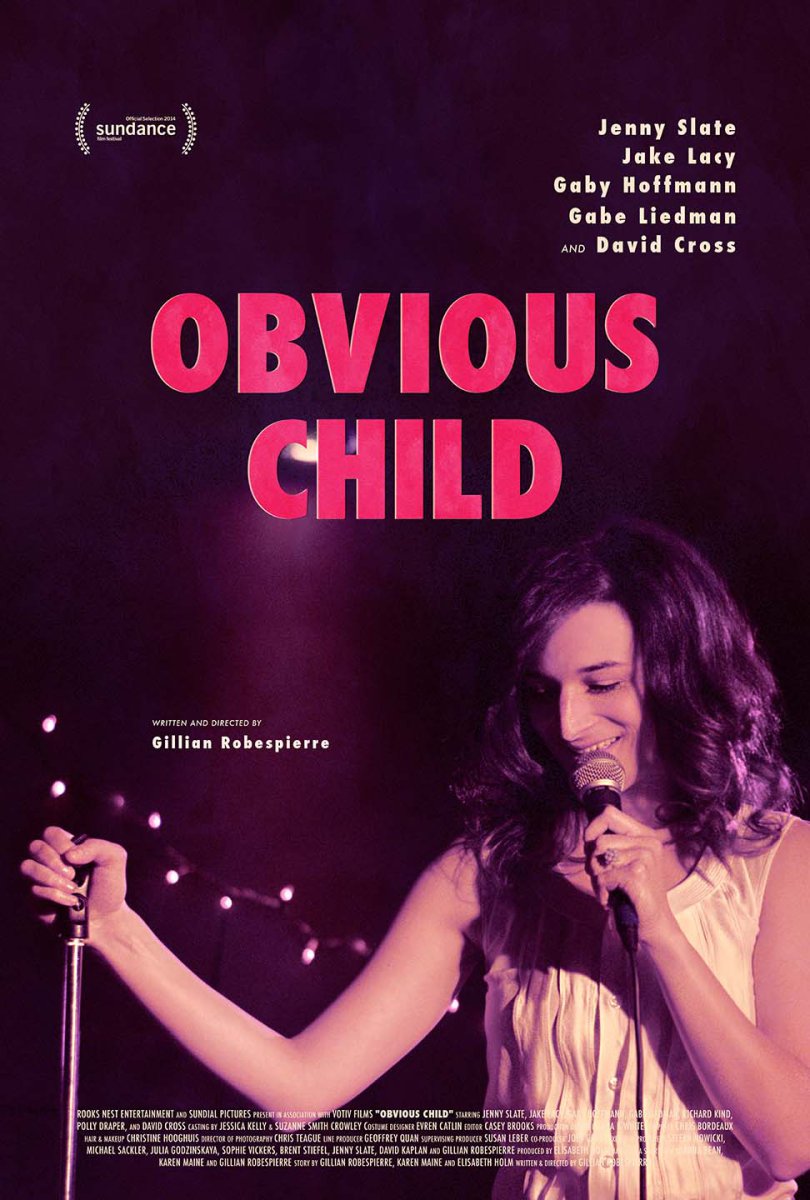This guest post written by Tessa Racked appears as part of our theme week on Ladies of the 1980s.
The political and cultural landscape of the United States in the 1980s was widely characterized by conservativism, reflected in cinema by the popularity of glossy action films like Top Gun and Lethal Weapon that glorify violent masculinity and the institutions that enable it. This trend was partly influenced by a backlash against the 1970s, including the rise of feminism in popular consciousness. Given this climate, it is somewhat surprising that two mainstream Hollywood films, Dirty Dancing and Fast Times at Ridgemont High, would take progressive approaches to a topic like reproductive justice. While Dirty Dancing remembers the realities of abortion pre-Roe v. Wade and illustrates the role that class plays in access to abortion, Fast Times at Ridgemont High shows a main character who exercises her right to choose without trauma or punishment, while managing to keep a relatively light tone. (If there’s another film that accomplishes the latter feat in the 32 years between Fast Times and Obvious Child, please mention it in the comments section because I certainly couldn’t think of one.)
Dirty Dancing (written by Eleanor Bergstein) is very much characterized by its historical setting. Our protagonist is Frances “Baby” Houseman (Jennifer Grey) the youngest daughter in a family on summer vacation in 1963. In her opening narration, Baby describes the time period as “when everyone called me ‘Baby’ and it didn’t occur to me to mind, before President Kennedy was shot… and I thought I’d never find a guy as great as my dad.” These are the last days of innocence, both for her and her society — remembered with nostalgia, but also the recognition that it came with some serious misconceptions about how the world works. Baby is good-hearted and idealistic, but has lived a sheltered life. She is caught between her desires to “save the world” by joining the Peace Corps, inspired by her father Dr. Houseman, and her obedience to her aforementioned family’s expectation that she settle down with a respectable (i.e. upper middle class) man, like the resort owner’s snobby grandson Neil. Baby has been raised to do the right thing, but within the boundaries of her status as a good (i.e. upper middle class) girl. This means abstaining from socializing with the working class resort staff, who turn out to be the very people who both need Baby’s help when one of them needs access to abortion, and in turn facilitate her own maturation.
Fast Times at Ridgemont High (directed by Amy Heckerling) is also situated in a specific historical point, due to it being a very modern film for 1982. The first scene takes us to the pinnacle of cool teen hangouts, the mall, and is set to the Go-Gos’ 1981 hit “We Got the Beat.” Depictions of femininity are filtered through a viewpoint that values modernity and autonomy. Freshman Stacy Hamilton (Jennifer Jason Leigh) worries that she isn’t as attractive to men as her classmates who dress like Pat Benatar, and chooses to be sexually active as part of exploring maturation. Scenes of her engaging in sex are relatively explicit (she is fully nude in one scene), but filmed in such a straightforward way that the titillation factor for the audience is minimized. There are two minor characters who are Black, but otherwise, the cast is homogeneously white and middle-class, putting the gender dynamics between characters in a relative vacuum free of intersectionality, unlike the room that Dirty Dancing makes for consciousness around class. The structure of the film makes the abortion narrative more progressive. Stacy is one of the protagonists, and the one who chooses to terminate her own pregnancy. The parallel of this story with those of the other main characters — Rat has a crush on her, Brad can’t hold down a job, Spicoli goofs off in history class — serves to normalize abortion, depicting it as a situation that some teenagers have to go through and may cause stress, but is not a cause of major trauma or drama.
Where Fast Times at Ridgemont High is very blatant in its depictions of sexuality, both in characters’ conversations and sexual interactions with each other, Dirty Dancing frequently uses dancing as a metaphor for eroticism. While engaged in a tame, awkward mambo with Neil, Baby and the audience both get the first glimpse of dance instructors Johnny and Penny (Cynthia Rhodes). Johnny and Penny impress the guests with a flamboyant mambo that quickly turns into an illustration of power dynamics at the resort. Resort owner Max Kellerman quickly shuts down their performance; they meekly part each other’s company to teach more conservative dance steps to guests. As dance and sexuality are linked in the film, the boss’ control over when and how Johnny and Penny dance parallel the social control that individual male characters and patriarchal society hold over both Penny and Baby.
Later that evening, Baby sneaks off to a staff party where she’s exposed to the titular dirty dancing, sharply contrasting the scene on the guests’ dance floor. “Kids are doing it in their basements back home,” staff member Billy tells Baby when she asks how they learned their hip-gyrating moves. Soon after, we discover that Penny is pregnant and wants to get an abortion. Again, the historical setting becomes key: as the movie is set before Roe v. Wade, Penny’s access to abortion is highly limited due to its legal status. Billy knows of a practicing abortionist, but the $250 fee that it costs (equivalent to $2,000 in 2016) is more than Penny can afford. She has been impregnated by Robbie, who straddles the Kellerman’s class divide. As a waiter, he can party with the staff (and have sex with Penny), but unlike Johnny and Penny, who depend on their salaries to survive, Robbie is a med student who is saving up for a sports car and flirts with Baby’s older sister Lisa, with the approval of their parents and Max Kellerman. He also refuses to support Penny in getting an abortion. “I didn’t blow a summer hauling bagels just to bail out some chick who probably slept with every guy here… some people count and some people don’t,” he tells Baby before trying to clarify his point by offering her a copy of The Fountainhead he carries in his back pocket (no seriously, that happens).
This exchange between Baby and Robbie illustrates some key points that Dirty Dancing makes. It reinforces the inaccessibility of abortion at this point: for characters with lower-paying jobs, it means the bulk of the summer’s wages, whether that means no sports car or no food. It also highlights the oppressive repercussions of the prevailing middle-class values of the day. Robbie aligns himself with the the “people who matter,” by feeling entitled to walk away from his responsibilities, letting less privileged staff take care of it. People mistakenly assume that Johnny impregnated Penny because of the support he shows her; not only has Robbie dumped sole responsibility for the pregnancy on Penny, he has left Johnny in the role of “father.” His reasoning for this entitlement? Penny must be a “slut,” and therefore isn’t worthy of respect. Once Penny grows to trust Baby, she tells her in a vulnerable moment: “I want you to know that I don’t sleep around… I thought he loved me. I thought it was something special.” This scene is a plea for the audience’s respect and sympathy for Penny as much as it is Penny wanting respect and sympathy from Baby. If she had sex with Robbie because she was deceived on some level, she becomes a victim, making her choice to have an abortion more acceptable. Even her decision to have sex with him becomes more acceptable because she did it for love, as opposed to a more casual desire.
Gaining access to abortion for Penny involves both supplicating and subverting the more privileged characters in the film, Dr. Houseman in particular. Baby procures the money from her father by rebelling against her role as dutiful daughter through lying to him, and reassuring him that the money isn’t going towards anything illegal. But money isn’t the only barrier that Penny must overcome. The abortionist is only available on the night that she and Johnny are booked to perform at another resort. “Everybody works here,” Johnny frostily informs Baby when she asks if they can cancel the performance. World-saving Baby solves the problem by learning Penny’s dance routine and filling in for her at the performance (not to mention falling in love with Johnny over the course of their training montage). Unfortunately, the “real M.D.” that Penny was promised turns out to be a guy with “a dirty knife and a folding table.” Baby turns to her father for help saving Penny’s life.
Unlike Objectivist Robbie, Dr. Houseman treats Penny with kindness, saving her life and her ability to have children, but he is not as progressive in his values as Baby. He is rude to Johnny, assuming him to be the father, and forbids Baby to fraternize with him or Penny. His instincts are to prevent Baby from ending up like Penny, to keep her as pure and innocent as her nickname implies. However, when he discovers that Robbie is the one who got Penny “in trouble” and sees Johnny stand up for Baby (spoiler alert: nobody puts her in a corner), Dr. Houseman apologizes to Johnny for his rudeness and praises Baby’s dancing.
Unlike Penny being cast as a victim, Fast Times at Ridgemont High‘s Stacy straightforwardly experiments with sex for the first time. Encouraged by her older, more sexually experienced friend Linda (Phoebe Cates), she wants to be mature and desired by men. Her initial experiences are ambivalent; she actively pursues Ron and Damone, but actual sex with them is disappointing for her. Her sexual debut with Ron takes place in a dugout at an empty baseball field; the camera switches between closeups of her face and her point of view, looking not at her partner but at the graffiti on the dugout walls, obviously not getting much pleasure from sex with him. Both Ron and Damone are focused on their own pleasure and take no notice of her uncomfortable expressions or requests to slow down; after Damone ejaculates prematurely, he can’t leave her house fast enough. The film gives us a protagonist who engages in casual sex with two different men, and makes no apology about her decision to terminate the resulting pregnancy, demanding that the audience respect her decision if we are to remain on-board with her and her story.
Stacy’s access to abortion is remarkably simple. The decision completely excludes her parents (who are barely present in the film to begin with). Her abortion is a private matter between her and Damone. Once Stacy tells him that she’s pregnant and after he stops trying to deny his responsibility (like Robbie, he also tries to slut-shame himself out of responsibility, asking how she knows it’s his), he says that she has to get an abortion, only to discover that she already decided and scheduled the procedure. She asks him to pay half of the $150 fee and give her a ride to the clinic. Until this awkward conversation, the rest of the logistics have been easily planned.
The cost is still high for two young people but not as exorbitant as what Penny has to pay (assuming Fast Times takes place in 1981, it’s the present-day equivalent of about $430); also considering that both Stacy and Damone are high school students in a relatively affluent community, being set back $75 is probably not a crisis. There is a scene of Damone, who makes money by scalping concert tickets, trying unsuccessfully to call in debts in order to raise the $75. We see his list of expenses, with “abortion” listed above “Rod Stewart tickets?”; the stakes are not so high that some humor can’t be afforded. Additionally, the cost of the abortion is not an anomaly in the film. The other characters have money concerns as well: Rat panics when he takes Stacy to a nice restaurant but leaves his wallet at home. Brad goes through a series of jobs over the course of the school year that he needs to pay off his car. Damone is constantly negotiating prices with his customers. The struggle to pay for an expense without relying on one’s parents is an expected factor in the characters’ lives.
Likely due to his inability to raise the money, Damone fails to give Stacy a ride to the clinic, causing her distress and embarrassment. However, her problem is quickly solved as she lies to her brother Brad about needing a ride to the bowling alley across the street from the clinic. The drama of her getting the abortion is mildly heightened when she doesn’t have anyone to drive her home, but Brad saves the day by picking her up after the procedure is over.
Unlike Penny’s experience, the abortion is performed with little fanfare. The scene of the procedure itself is cut from the theatrical release, which shows Stacy in a clean, modern examination room being treated by the doctor and nurse with the same detached professionalism they would likely show any other patient. Unlike Penny’s near-death experience at the hands of a quack, Stacy is able to walk out of the clinic, and Brad promises not to tell their parents and quickly relents from asking her for details: “Come on! Who did it? You’re not going to tell me, are you? Okay, it’ll just be your secret.”
Linda, who gives Stacy advice about men throughout the film, seeks revenge for her after finding out that Damone didn’t follow through on his promise to give her a ride, graffitiing “prick” and “little prick” on his car and locker. His female classmates giggle at him as he passes by them in the hall to discover the message on his locker. He also comes close to losing a friend, as he and Rat almost come to blows when Rat confronts him over having sex with Stacy. Compare Damone’s public humiliation to Robbie’s comeuppance in Dirty Dancing: getting a pitcher of water thrown on him by Baby and losing the respect of Dr. Houseman, neither of whom he would likely never see again anyway.
Ultimately, Dirty Dancing treats Penny’s abortion as a historical artifact, a somber near-tragedy of a bygone era. While a sympathetic character who isn’t sacrificed on the altar of moral stances, Penny is hardly the focus of the film. If anything, her story is a springboard for Baby’s character development and romance with Johnny. She is well and happy at the end of the film, but just another face in the crowd supporting Johnny and Baby as they finally nail the lift that Penny could probably do in her sleep.
In Fast Times at Ridgemont High, Stacy’s abortion leads to personal growth. The experience doesn’t frighten Stacy away from sex per se, but it does incite her to reconsider what she wants from a relationship with a man. “I don’t want sex, anyone can have sex… I want a relationship, I want romance.” She achieves this goal by re-igniting her relationship with Rat. The epilogue informs us that the couple “are having a passionate love affair… but still haven’t gone all the way.”
From a reproductive justice standpoint, Penny’s story is an unnerving tale from a former era that tragically still threatens many people living today, should they seek an abortion. Stacy’s experience is one that should be available to anyone who wants it, both in terms of ease of access, safety, and perhaps most importantly, positioning people who want access to abortions as the self-determining protagonists of their own stories.
See also at Bitch Flicks: Reproduction and Abortion Week: ‘Dirty Dancing’; Reproduction and Abortion Week: ‘Dirty Dancing’ and the Dancer’s Dilemma
Tessa Racked blogs about fat characters in film at Consistent Panda Bear Shape. They have had “(I’ve Had) the Time of My Life” stuck in their head for over a week now.
